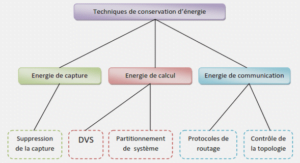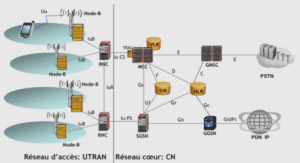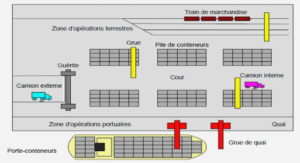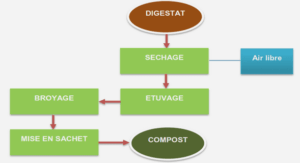MONOLITHIC SUPERELASTIC RODS WITH VARIABLE
FLEXURAL STIFFNESS FOR SPINAL FUSION : MODELING
Introduction
Spinal disorders can be treated by several means including multisegmental fusion surgery.
Rigid posterior instrumentations are commonly used to prevent motion of the instrumented
segment and aid fusion healing [1, 2]. However, this procedure brings its own problems, including adjacent-level disc disease. Due to the abrupt stiffness variation between the instrumented and intact spinal segments, stresses are increased locally, which is commonly considered as a factor leading to disc degeneration [3]. The use of so-called dynamic stabilization systems have been proposed to lower the stress concentration at the extremities of the implant and to reduce the risk of adjacent segment degeneration [4]. Those “soft” instrumentations are however accompanied by problems such as mechanical failure of the implant or degeneration within the stabilized segment [5, 6].
Materials and methods
illustrates the overall path followed in this study. First, a numerical model simulating localized Joule-heating on a 5.5 mm diameter rod is developed and validated by comparing experimental data with calculations. Such a model is found capable of predicting the temperature distribution on a locally-annealed rod as a function of a given electric current intensity – heating time schedule. Next, a series of Ti-Ni specimens are subjected to variable Joule-heating heat treatments and mechanically characterized by tensile testing to produce a set of annealing temperature-dependant stress-strain diagrams (material law). Each stressstrain diagram can then be assigned to a specific annealing temperature. By combining the temperature distribution of the locally-annealed rod and the material law, a numerical model capable of simulating the effect of Joule heating annealing on the mechanical behavior of Ti- Ni variable-stiffness rods is developed and experimentally validated. The developed.
Annealing: Joule-heating induced temperature distribution modeling and validation
Commercial ANSYS 14 finite element analysis (FEA) software is used to create the solid model of the rod and to analyze the effect of Joule-heating on the temperature distribution in the rod. The ANSYS’ “Thermal-Electric” (steady-state) and “Transient Thermal” modules are used to simulate the local Joule-heating and its impact on the temperature distribution during annealing. The main inputs of the thermal-electric model are: the geometry and the electrical properties of the rod-electrical contacts assembly, the electrical current intensity, and the thermal exchange conditions with the surroundings. The output of the thermalelectric model is the volume distribution of the Joule heating-induced heat sources. These last data are used in the transient thermal model to calculate the temperature distribution in the rod-contacts assembly as a function of the heating time.
Mechanical behavior after Joule-heating annealing
Database of the annealing temperature-dependant stress-strain diagrams
To assess the property-modification capabilities of J-PDA, 10-minute Joule-heating of the asdrawn samples is performed to reach the following maximum steady-state temperatures on the rod: 260, 345, 430, 500 and 585°C. Evidently, this heating technique results in a certain temperature gradient along the sample, especially in the vicinity of the massive electrical contacts (heat sinks). To mitigate the effect of the uneven temperature distribution, the extremities of the specimens, which were subjected to high temperature gradients during annealing, are entirely clamped between the grips of the testing machine. This approach allows the mechanical behavior of the rod to be associated with a single processing temperature (see section 3.5.2 for more information).
Mechanical model validation
The mechanical model was validated by comparing the numerically predicted and experimentally measured bending profiles of a cantilevered rod loaded at its free extremity.
The 25 cm long rod is loaded by a dead weight of 91 N and then partially unloaded to 47 N. This loading sequence allows for model validation under both loading and unloading.
Performing both validation is relevant because the loading and unloading stress-strain paths of shape memory alloys differ (mechanical hysteresis). Bending profiles are measured using a LabVIEW-controlled video extensometer built with a GRAS-20S4M-C (Point Grey Research, Japan) video camera. A photograph of such testing is shown in Figure 3.4b).
Conclusion
This paper proposes a simplified finite element analysis of an instrumented spine segment to assess the eventual biomechanical benefits of variable flexural stiffness Ti-Ni rods. It was shown that the use of a “softer” Ti-Ni rod changes the behaviors of the spine in lateral
bending and rotation but not in forward flexion. It was possible to enhance the effects of such rods in all three motions by replacing the highest screw by a cable. With this anchor configuration, the heterogeneous Ti-Ni rod makes it possible to lower the adjacent disc pressure, the stress on the rod and the pullout force applied on the anchors.
To enhance the effect of the Ti-Ni rod in lateral bending and axial rotation, the cable could be replaced by a spinal hook. Further work should lead to the development of a more detailed spine model and its experimental validation. Fusion of the vertebrae should also be considered to improve the model’s accuracy. Finally, the mechanical properties gradient of the spinal rod will be optimized to provide to the spine an adequate stabilization, while decreasing the risk of adjacent disk degeneration.
|
Table des matières
CHAPITRE 1 INTRODUCTION GÉNÉRALE
1.1 Problématique
1.1.1 Instrumentations dynamiques existantes
1.1.2 Instrumentations hybrides
1.1.3 Influence des ancrages
1.1.4 Résumé
1.2 Solution proposée
1.3 Alliage à mémoire de forme : Comportement mécanique et choix du matériau
1.4 Objectifs de recherche
1.5 Méthodologie
1.5.1 Matériau utilisé
1.5.2 Technologie de fabrication des tiges
1.5.3 Modélisation
1.5.4 Étude biomécanique
1.6 Organisation de la thèse
CHAPITRE 2 MANUFACTURING OF MONOLITHIC SUPERELASTIC RODS
WITH VARIABLE PROPERTIES FOR SPINAL CORRECTION
FEASABILITY STUDY
2.1 Résumé
2.2 Abstract
2.3 Introduction
2.4 Methodology
2.5 Results
2.6 Discussion
2.7 Conclusion
2.8 Acknowledgments
2.9 References
CHAPITRE 3 MONOLITHIC SUPERELASTIC RODS WITH VARIABLE
FLEXURAL STIFFNESS FOR SPINAL FUSION : MODELING
OF THE PROCESSING-PROPERTIES RELATIONSHIP
3.1 Résumé
3.2 Abstract
3.3 Introduction
3.4 Materials and methods
3.4.1 Material
3.4.2 Joule-heating annealing setup
3.4.3 Annealing: Joule-heating induced temperature distribution modeling
and validation
3.4.4 Mechanical behavior after Joule-heating annealing
3.4.4.1 Database of the annealing temperature-dependant
stress-strain diagrams
3.4.4.2 Mechanical model
3.4.4.3 Mechanical model validation
3.5 Results
3.5.1 Joule heating-induced temperature distribution
3.5.2 Set of the annealing temperature-dependant stress-strain diagrams
3.5.3 Mechanical behavior after Joule-heating annealing
3.6 Models applications
3.6.1 Thermal model: testing different Joule-heating current-time schedules
3.6.2 Mechanical model: prediction of the variable-stiffness rod’s flexural
behavior
3.7 Discussion
3.8 Conclusion
3.9 Acknowledgments
3.10 References
CHAPITRE 4 BIOMECHANICAL ASSESSMENT OF THE STABILIZATION
CAPACITY OF MONOLITHIC SPINAL RODS WITH DIFFERENT
FLEXURAL STIFFNESS AND ANCHORING ARRANGEMENT
4.1 Résumé
4.2 Abstract
4.3 Introduction
4.4 Materials and methods
4.4.1 Specimen preparation and fixation
4.4.2 Spinal rods
4.4.3 Biomechanical testing setup
4.4.4 Measurements
4.4.5 Statistical analysis
4.5 Results
4.5.1 Forward flexion
4.5.2 Extension
4.5.3 Lateral bending
4.6 Summary on relative mobility for different configurations
4.7 Discussion
4.7 Conclusion
4.8 Funding
4.9 Acknowledgments
4.10 Conflict of interest
4.11 References
DISCUSSION GÉNÉRALE
CONCLUSION
![]() Télécharger le rapport complet
Télécharger le rapport complet






